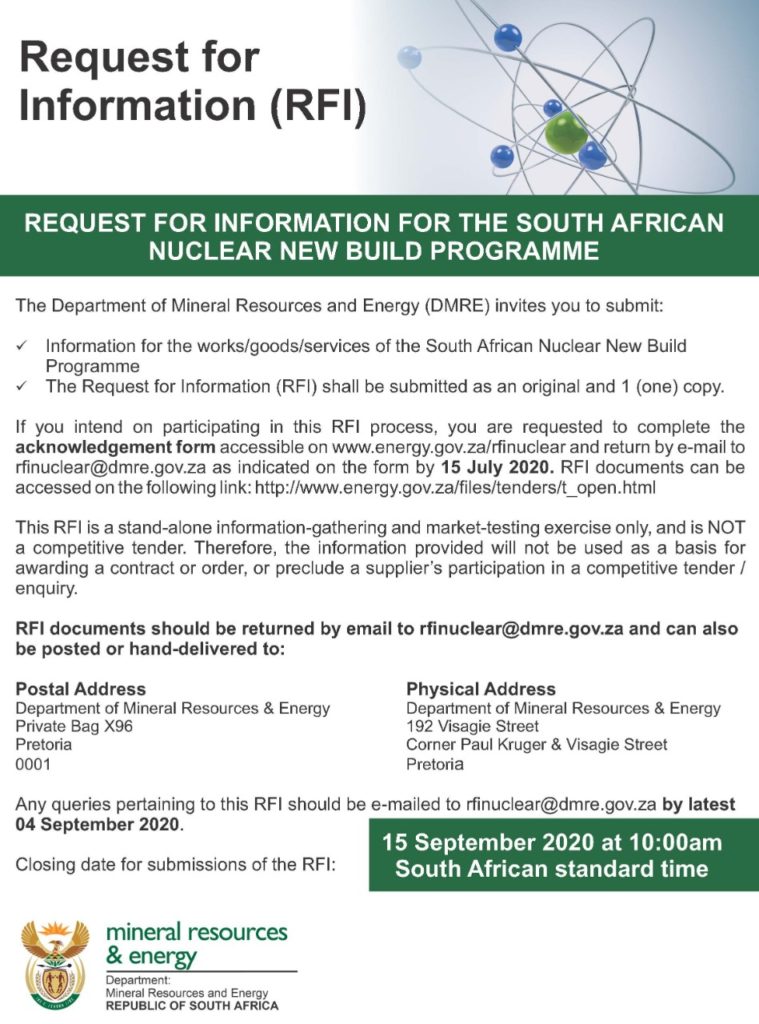The provision of reliable and affordable electrical energy is vital for the future prosperity of South Africa and indeed of the entire world. The upliftment of impoverished populations everywhere depends upon it. In a world of finite resources and increasing population reliable nuclear energy will be an essential part of the energy mix. Read more…
Think about a piece of charcoal the size of your thumbnail. Charcoal consists largely of carbon, one of the 92 distinct chemical elements found on Planet Earth. Cut it in half and then in half again eighty times. You are left with the smallest piece of matter that is still recognisably carbon: a single atom. Read more…
Radiation is all around us. It comes from outer space and from radioactive materials in the ground under our feet, in the building materials that surround us, in the food we eat and particularly in the air we breath. Read more…
Radioactive materials and how they come to be present on Earth, naturally and man-made, are discussed in NIASA Fact Sheet 3. All radioactive materials emit ionising radiation, i.e. radiation with sufficiently high energy to interfere with the structure of the atoms and molecules in the matter through which it passes. Read more…
Uranium is a hard, very heavy, silvery-grey metal. It is 70% heavier than lead and almost as heavy as gold. It is widely distributed in rocks forming the Earth’s crust, particularly granite, but generally at low concentrations. The average concentration in rock is around three parts per million (or 0.0003%). In some concentrated deposits, however, notably at Cigar Lake in Canada, the weight of the uranium in the ore can exceed 20%. Read more…
There are many types of nuclear power reactors. Most of them, 265 of the 430 reactors now generating 14% of the world’s electricity, are Pressurised Water Reactors (PWRs). There are several types of PWR. Examples are the two 900 megawatt (MW) reactors of French design operating at Koeberg, 28 km north of Cape Town. Reactors to be built in the future in South Africa will be later versions of the same basic type. Read more…
Nuclear facilities routinely discharge small, carefully monitored and controlled quantities of radioactive material into the air and water environment. In the case of Koeberg Nuclear Power Station 28km north of Cape Town the liquid effl uent is mixed with the fast-moving cooling water outfall that discharges into the Atlantic Ocean. In the case of Necsa’s Pelindaba site which includes the SAFARI-1 research and isotope production reactor the liquid effl uent is released into the Crocodile River upstream of the Hartbeespoort dam. Read more…
Radioactive waste disposal in South Africa is carried out in accordance with international codes and standards. In particular, the various types of waste are classified in accordance with the International Atomic Energy Agency document ‘Classification of Radioactive Waste’ GSG-1. ¬ This Fact Sheet is concerned with the disposal of Low Level Waste (LLW). High Level Waste (HLW) disposal is discussed in NIASA Fact Sheet 9. Read more…
Some 430 nuclear reactors of various types are today generating approximately 14% of the world’s electricity. The uranium fuel for most commercial power reactors remains in the reactor core for about four years. It is then transferred to storage pools on site for several years more to allow radiation levels around it and heat still being generated inside it largely to die away. Read more…
A nuclear power reactor cannot explode like a nuclear bomb. The world has, however, experienced accidents involving severe damage to the reactor cores at Three Mile Island in the USA in 1979, at Chernobyl in the former USSR in 1986 and at Fukushima in Japan in 2011. Read more…
X-rays and the use of radioactive isotopes have revolutionised aspects of medical practice and continue to do so. is Fact Sheet discusses the diagnostic and therapeutic applications of X-rays and then the increasingly widespread uses of radioactive isotopes. Read more…
Data from other organisations:
MOX fuel shipments from Europe to Japan, Read more…
Reproduced by permission of PNTL
Pacific Heron and Pacific Egret, Read more…
Reproduced by permission of PNTL

 Welcome to popups plugin
Welcome to popups plugin